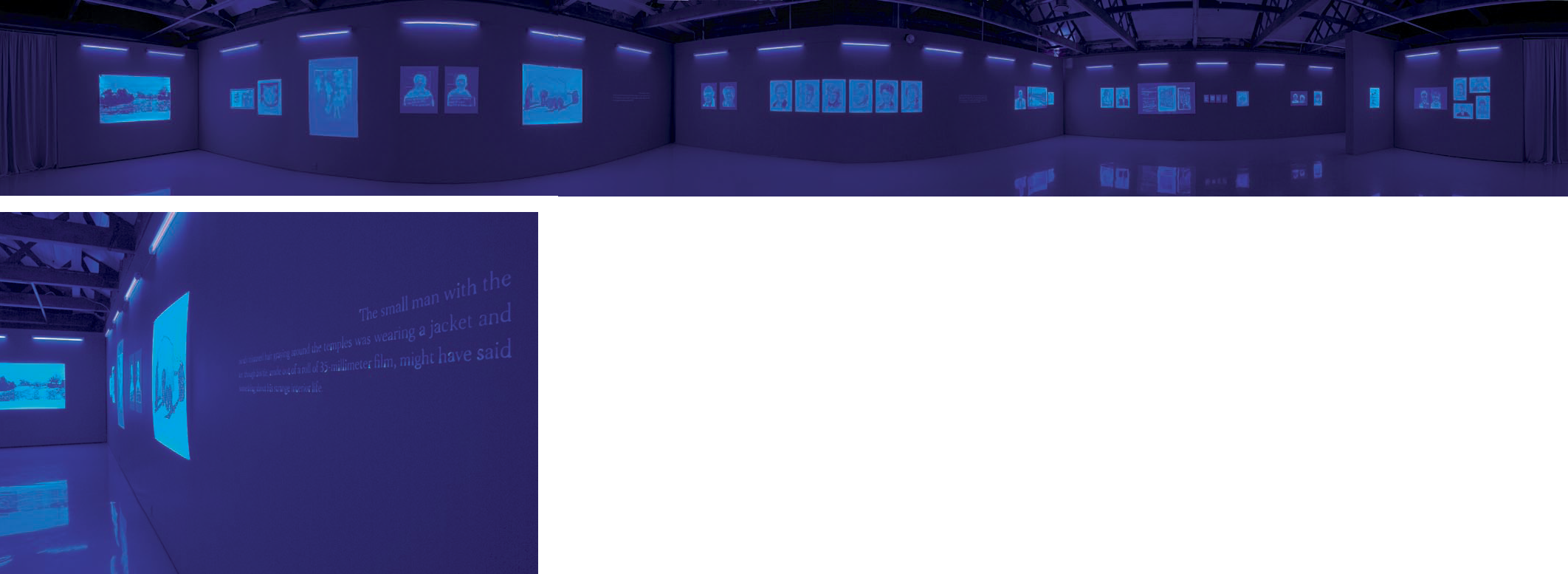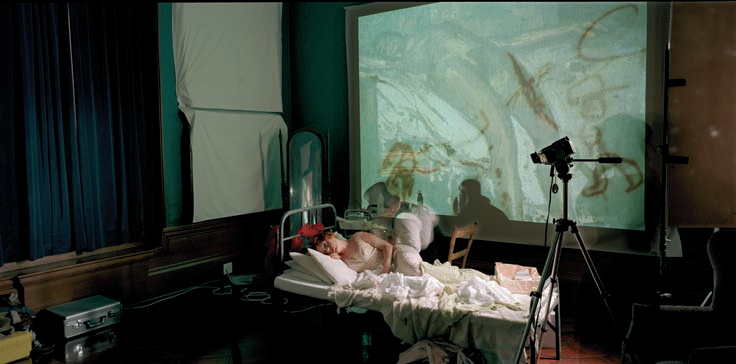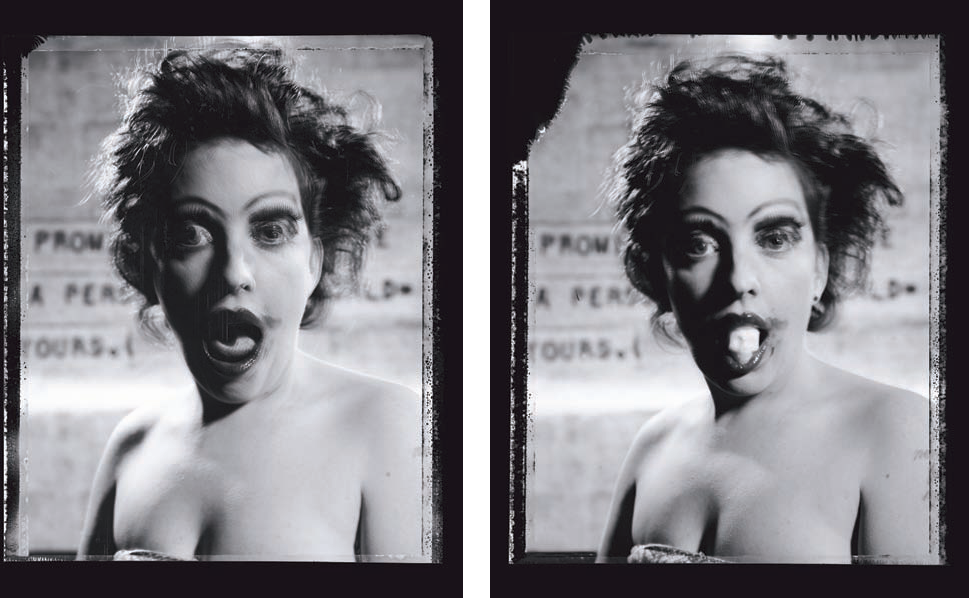Making no distinction between her work as an artist, activist, lecturer, curator, and writer, Kathryn Smith also considered another career possibility: forensic pathology. During her postgraduate studies (1998 to 1999) she worked in a police mortuary observing the photographer as he documented body wounds. Smith calls the investigative process the “ping-pong action between truth and reconstruction.”
Smith is fascinated with the “psycho-geographies” of places, believing that spaces are never fully empty but teem with virtual “particles” that can be psychically examined to call up past interactions between the space and the people who were once present.
Smith’s 2003 performance Jack in Johannesburg at the Johannesburg Art Gallery dealt with historically documented connections between celebrated British painter Walter Sickert and the Jack the Ripper killings in Victorian London. Smith wrote, “Sickert’s work can be found in most South African public collections, a legacy of British colonialism. The performance brought this colonial past and the democratic present, characterized by violent crime, into a close and discomfiting relationship through the metaphor of Sickert, the alleged artist-criminal.”
Text and visual material that could be read as supporting evidence were projected onto screens. Smith lay in front of them, having her upper left arm tattooed with a surrealist mantra, “Never look for unicorns until you run out of ponies.” The entire project was one giant mise-en-scène, from physical location to scripted/unscripted action to evocation of a “moment out of time,” all of which are intrinsic features of psycho-geography.
Murder is a recurring topic for Smith. In her six-hour performance for the camera to produce the compelling double image Twin (2006), Smith addressed the unsolved killing of Hollywood starlet Elizabeth Short in Los Angeles in 1947. Known as “The Black Dahlia” for her dark looks, Short’s gruesome death—she was cut in two—became a symbol of eroticism for the surrealists. For the photographs Smith pasted her eyelids shut, covering them with transfer images of Salvador Dalí’s eyes and tried to imagine Short’s thoughts while being killed. Twin seems to shift between the states of living and death.
For In Camera (2007), Smith lined the gallery with sheets of paper laboriously hand-drawn in invisible ink that, under normal lighting, appeared blank. At intervals the lighting switched to ultraviolet, and instantly images and text, including photos of six young girls abducted by a pedophile in the 1980s, appeared. For viewers familiar with the girls’ faces from repeated press exposure at the time, the déjà vu sensation was that the images had reappeared on the wall as if guided by a subconscious act of personal will rather than through the design of the artist.
Smith shares with her audience her own total immersion into every detail of the “cases” she takes on, and in so doing produces extraordinarily rich and conceptually provocative work.

In Camera
Drawings in white acrylic and invisible
ultraviolet ink on paper with audio
and timed lighting sequence
Installation view, Goodman Gallery, Cape Town, 2008
Image courtesy of the artist and the Goodman Gallery, Cape Town
Photographer: Michael Hall
© Kathryn Smith

Jack in Johannesburg 2003
Production stil
Pigment print on cotton paper
76 x 150 cm
Photographer: Andrew Meintjes
© Kathryn Smith

Twin 2006–07
Fiber-based LightJet prints (diptych)
100 x 79 cm each
Image courtesy of the artist and the Goodman Gallery, Cape Town
Photographer: Crispian Plunkett
© Kathryn Smith